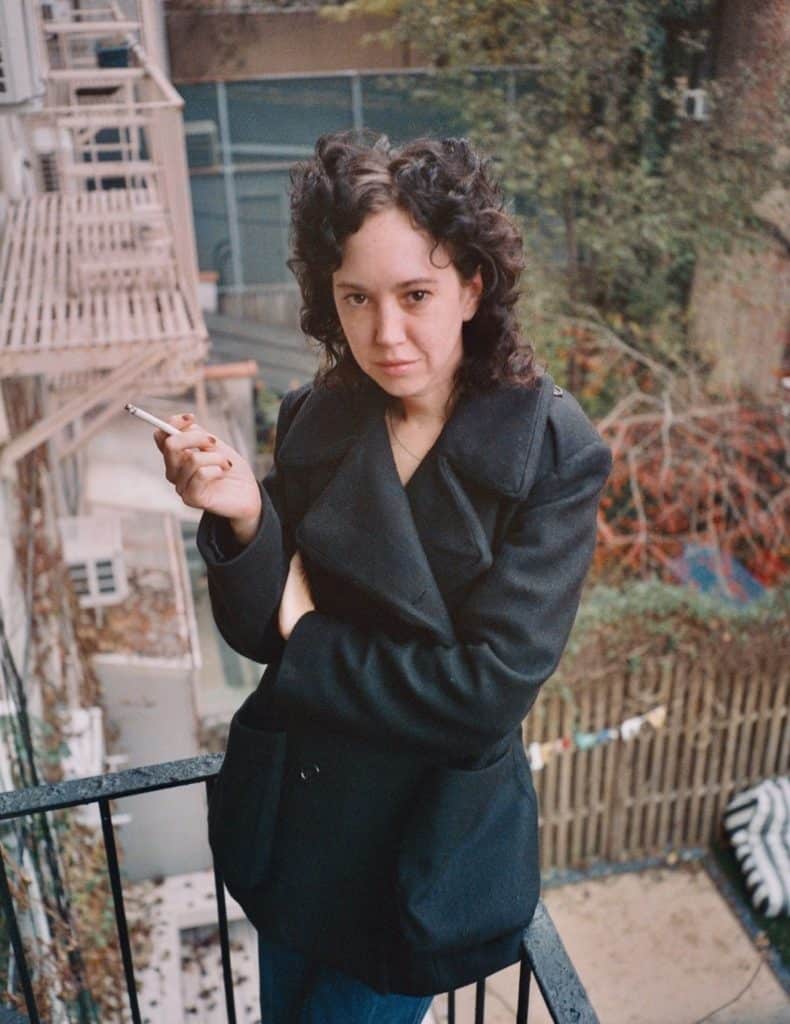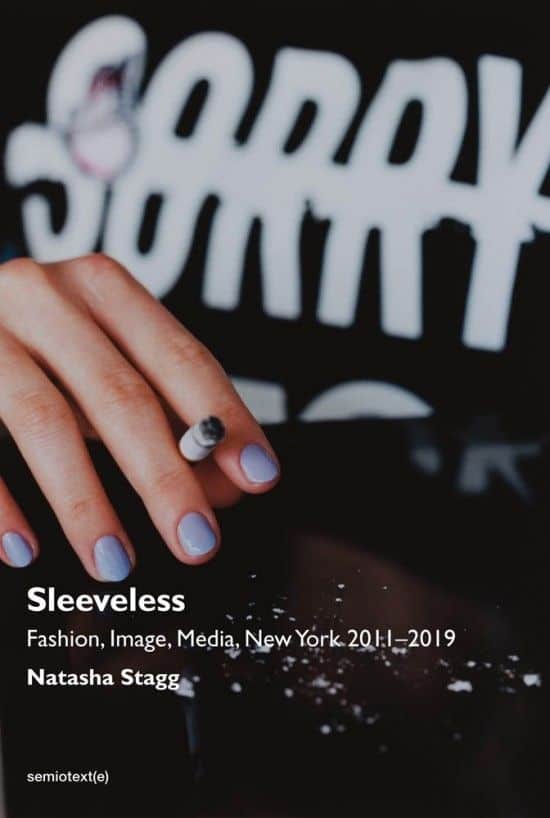Review of Sleeveless: Fashion, Image, Media, New York 2011-2019 by Natasha Stagg
In another era, the worst thing you could be accused of was selling out. But for a younger generation, it’s become the objective: the new version of the American dream. No matter how old you are, the corporatization of our culture makes it common to talk about things like our “objectives.” We’ve been trained to speak in the language of big business, to think of ourselves as brands and advertise them on social media. Sleeveless: Fashion, Image, Media, New York 2011-2019, a collection of Natasha Stagg’s essays and stories, unpacks some of these ideas. Drawing from Stagg’s experience working for New York fashion and media companies and from the celebrities she’s profiled for various art and fashion magazines, Stagg examines American ideas about fashion, beauty, and fame in the early part of the 21st century. As a culture, the direction we’re heading in often feels confused. Upwardly mobile or straight to hell?
Although we’ve only just crossed the threshold of the new decade, many of the celebrities (Kim Kardashian West) and phenomena (New York Fashion Week) Staggs dissects seem curiously dated, like something unearthed from a time capsule. This gives you an idea of how fast the culture is moving, a point Stagg drives home again and again. She’s interested in the reasons why, and in the evolution of her own person (the book, she notes, “is a personal account of a very strange time”), but like the rest of us, is swept up in the frothy forward-moving current. Of one thing Stagg is certain: “it is ever more difficult to imagine ourselves the way we once did, before we were made to feel so implicit in advertising.”
Although Stagg started her career writing about fashion, she now works in “advertorial” (advertising in journalism’s clothing). In “Out of State,” a diary of two summers, Stagg writes, “I’m very lucky, I keep thinking and hearing from colleagues, to be writing for fashion houses instead of about them, for magazines. It doesn’t seem logical, to think this way, as a writer, but the truth is that somehow, the whole industry has been turned around so that the brands have more freedom than the press.”
Stagg tries to straighten out the turnarounds, or at least retrace her steps, starting when she moved to New York in 2011. She has arranged her material not in chronological order, but by theme, and the 24 pieces (the majority essays, with a few tentative short stories thrown in) are filed in four categories: “Public Relations,” “Fashion,” “Celebrity,” and “Engagement.”
“Two Stops” is a diary about work, Tinder dating, and the fall of men like Harvey Weinstein, Bill Cosby, and Louis CK, around the time when the New York Times started “keeping a running list of men who experienced a professional fallout following accusations of sexual misconduct.” Stagg notices a change in the men she goes out with. “They all spoke with the same, flippant tone about women getting ahead of themselves or making bigger deals about certain things than was productive. It was as if they were making sure I wasn’t one of the ones who would get hysterical.”
“Consulting” recounts Stagg’s decision to quit her fashion magazine job in order to work for a dubious company designing a beauty app. She’s hired under the supposition that she “knew about media and where it was going,” but she only knows the customs of a fading empire (“Editors are actually the women who have tried everything and stick to Vaseline around the eyes and coconut oil on the hair”). Not even understanding what the app is for, Stagg hides in a colleague’s office, flopped on a couch and tapping away on her laptop. The essay is a discursive meditation on contemporary ideas about beauty, touching down on the way reality television and social media reflect, warp, and inform our ideas and ideals. Stagg writes, “I’d never be as beautiful as I used to be, back before smartphones existed.”
In “Internet as Horror,” Stagg writes of how “it’s easy to imagine that the next shift in how we communicate will have a lot to do with the so-called post-truth era. Our awareness of native advertising, artificial intelligence, and data mining has impacted levels of trust in all forms of communication.” Astutely, she analyzes the communication of “celebrities” like the current U.S. President, who “uses emphatic language to reach the lowest common denominator – the rule of the simpler the message, the easier it is to agree with – in the same way protest chants and hashtags do.”

Stagg is in her element investigating trends to understand what makes them resonate with the wider culture. “Confidence” starts out as a profile of a young woman famous for taking body-positive selfies, but opens up into a larger analysis of a cultural phenomenon, what Stagg calls “a messy self-awareness.” In “Notoriety,” Stagg again offers a profile of a specific person (here the model Amina Blue) and makes that subject representative, in this case of “her generation’s particular acceptance of overexposure and its acute discomfort with pressure to perform.”
“Right Time” looks at influencer culture: the people getting other people to buy things. “What was authenticity, in another era?” Stagg wonders. Her analysis of the prototypical influencer is skewering, calling her “basic—the opposite of avant-garde… she is, by default, a sellout.” Stagg gets even more specific. The influencer’s typical body type is “athletic and rounded. They flaunt their extravagant vacations, loving relationships, and stable home lives, even as they remain grounded enough to foster a large group of adoring friends. This is the lifestyle, it seems obvious now, that America has always truly wanted.”
The weakest pieces are all clustered together in the middle of the book. They include scribbled- off think pieces like “The Micro-trend” (citing an “article I skimmed” and another one “half-read”), and “The Scammer” (“a foreign-sounding pseudonym living in a distant country…a Craigslist potential roommate, or a phoney [sic] relative with a fatal disease”). Stagg writes about these topics dully, without much personal engagement, and without the kinds of insights that characterize the best of her writing.
Throughout the collection, however, Stagg gets under the hood to take apart the mechanics of commodified desire. She writes frankly about sex, but might consider vulnerability a kind of weakness; Sleeveless tears off the places where it might wear its heart. The diary “Out of State” includes a summer romance with an unlikely beau, a garbageman from Staten Island, whom Stagg agrees to go out with only because it will make a great story. Surprisingly, an unlikely romance blooms. About the first date, Stagg writes, with disbelief, “No matter what way it would go, it was just this really nice thing already.” In the world in which Stagg moves, niceness is so unusual, it’s practically destabilizing.
Stagg’s New York is full of artists and writers and models and ravers, all experiencing the kind of self-cannibalization that happens through making oneself a personal brand. Our culture sends out strong messages about how important and great it is to do this; Sleeveless helps us understand the slapdash rules of the game we’re all unwittingly playing. It also slyly communicates the contemporary understanding that the only way to telegraph integrity is by making it known that you’re in on the joke of how low we’ve all sunk. How can it be a race to the bottom if we’re all already there?
Wherever we live, it seems hard these days to simply be alone with ourselves. We know there’s something more to life, and we’re encouraged to keep scrolling to try to find it. After all, that’s where we receive messages from advertisers (and other mind-control groups); that’s where the brainwashing happens. “How does one stop from reaching for the phone, when one has to reach for the phone to do everything else?” Stagg wonders.
Having escaped the city for a spell, Stagg writes, “After all of this natural beauty and letting life happen to me, the bigness of nature and all of that, I’m ready to go back to New York and ride the subway, experience again the tension of train delays and closeness of real life, the one I’ve had a hand in creating, whether I set out to or not.” Sleeveless invites us to reflect on where our ideas about “real life” comes from, and what self-discovery would look like if we looked not to influencers, but inside ourselves.









